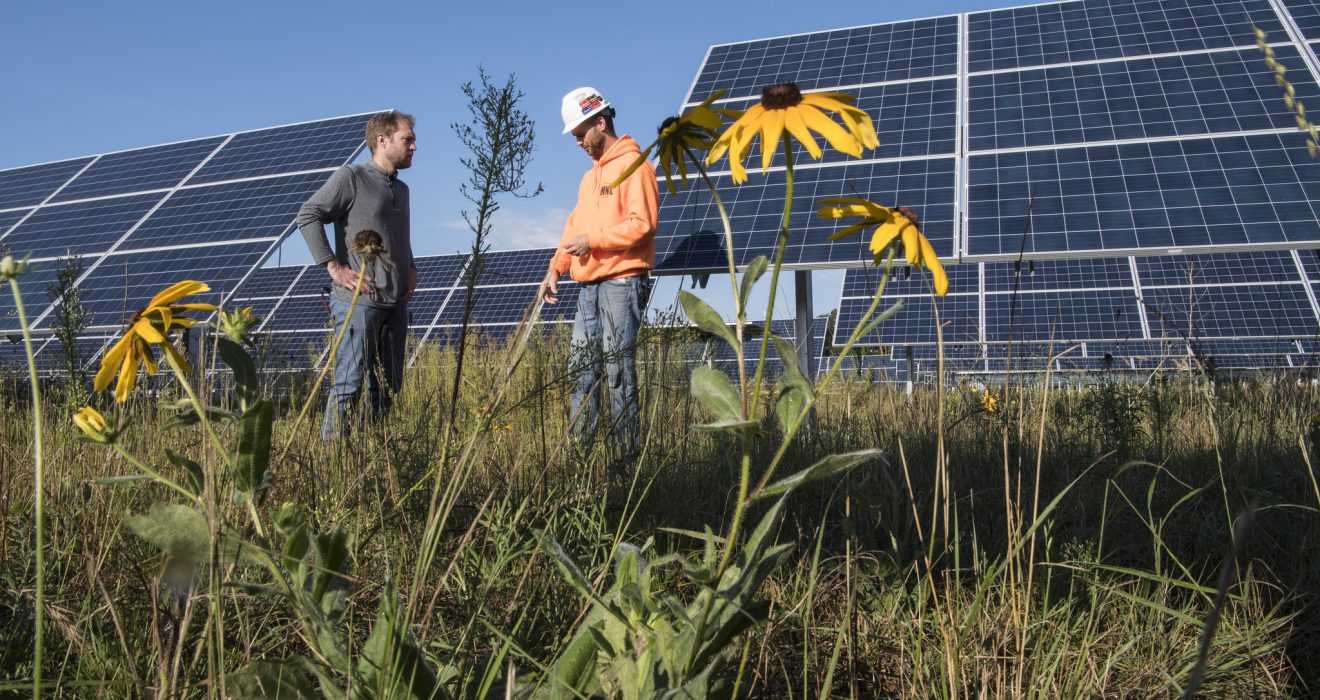Minnesota stands at the crossroads of a transformative journey, where the shadows of a coal-powered past are being replaced by the radiant promise of solar energy. In a groundbreaking move, Xcel Energy, a major utility, has set in motion the transition of one of the nation’s largest coal plants, Sherburne County Generating Station, into the colossal Sherco Solar project. This initiative not only marks a significant stride in the pursuit of a sustainable, carbon-free future but also presents a multifaceted challenge for the communities, particularly Becker, that have long been intertwined with the coal industry.
As the sun sets on the era of Sherco’s coal-fired dominance, a new dawn emerge, illuminating the complexities of economic restructuring, environmental stewardship, and the delicate balance required for a just and inclusive transition. The Sherco Solar project not only symbolizes the changing energy landscape of Minnesota but also serves as a beacon, guiding discussions on the intersection of clean energy goals and the socio-economic well-being of the communities it affects.
Closing the Chapter on Sherco
Closing the chapter on Sherco marks the end of an era as Xcel Energy shuttered one of the power generating units on New Year’s Eve. Sherburne County Generating Station, fondly referred to as Sherco, has stood as a formidable force in Minnesota’s energy landscape since its inception in 1976, delivering a robust 2.2 gigawatts of electricity. However, this longevity came at the cost of substantial carbon emissions, a reality prompting Xcel Energy’s resolve to shift entirely to carbon-free electricity by 2040. The closure of one unit is a poignant first step in this ambitious transition, setting the stage for the decommissioning of the remaining two units in the years to come.
Emission Reduction and Climate Mitigation
The environmental impact of closing even one unit at Sherco is poised to be transformative in the quest to mitigate carbon emissions. In 2022 alone, Sherco contributed roughly 10.5 million metric tons of carbon, solidifying its position as Minnesota’s most significant source of carbon emissions. The retirement of one unit is expected to yield substantial benefits, preventing an estimated 3.6 million metric tons of carbon emissions annually. This noteworthy reduction equates to the environmental equivalent of removing over 780,000 cars from the road, underscoring the pivotal role this transition plays in addressing the urgent challenges posed by the climate crisis.
Economic Challenges in Coal Communities
As the transition to clean energy gains momentum, there are profound economic challenges facing communities like Becker, Minnesota. Sherco, a key employer in the region for nearly five decades, played a central role in the city’s tax base, contributing a substantial 75 percent in 2019. The economic ramifications of this transition on coal-dependent towns, such as Becker, underscore the pressing need to address how these communities can be adequately supported throughout the shift. Balancing the imperative of environmental conservation with the economic well-being of these areas poses a dilemma that requires thoughtful consideration and strategic planning to ensure a just and equitable transition for all stakeholders involved.
Xcel Energy’s Sherco Solar Project
In response to the economic challenges facing Becker, Xcel Energy has embarked on the Sherco Solar project. This groundbreaking initiative aims to replace the retiring coal plant with the largest solar farm in the nation. Commencing construction last year, the project is anticipated to boast a generating capacity of 710 megawatts. This shift exemplifies a larger trend within the utility sector, where companies are progressively embracing solar and other renewable sources, spurred by the declining costs of clean energy and heightened public awareness of the urgent need for climate action.
Economic Trade-offs
The transition from coal to solar power aligns with crucial climate objectives, yet it brings about significant economic trade-offs. Unlike solar and wind farms, which operate with fewer personnel, coal plants inherently provide more jobs. This shift in employment dynamics prompts important considerations about potential job losses in the coal industry and the necessity for comprehensive retraining programs. Xcel Energy, recognizing the economic challenges faced by coal communities, has undertaken measures to support a just transition. While the Sherco Solar project creates jobs during the construction phase, it also acknowledges the inevitable reduction in the operational workforce in the long run, underscoring the complex interplay between environmental imperatives and economic realities.
The Future Landscape: Accelerating Transition and Challenges Ahead
The Sherco Solar project represents a pivotal moment in the broader transition toward clean energy. As utilities and local governments leverage tax incentives for renewable projects, the trend of replacing retiring coal plants with solar farms is expected to accelerate. The economic challenges faced by coal communities necessitate thoughtful solutions and a shared responsibility among stakeholders, including community members, ratepayers, and utilities. As the energy landscape undergoes profound changes, the focus must remain on creating an inclusive and sustainable future, ensuring that no community is left behind.
Conclusion
In conclusion, Minnesota’s transition from coal to solar energy is emblematic of the broader global shift toward cleaner alternatives. It signals progress in mitigating climate change but also underscores the importance of addressing economic challenges in affected communities. The Sherco Solar project serves as a case study for balancing environmental responsibility with the need for equitable economic development, providing valuable insights for regions grappling with similar transitions worldwide.

